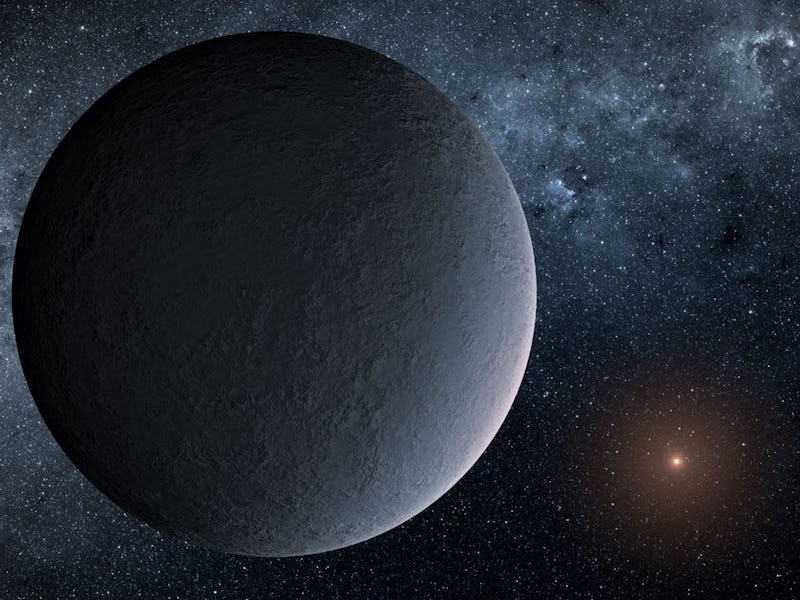NASA scientists announced Wednesday that they’ve discovered a new planet that’s about the same mass as Earth … but much much colder. This new planet, designated OGLE-2016-BLG-1195Lb, orbits its star at about the same distance that Earth orbits the sun. But since the star it orbits is only 7.8 percent the size of our sun, it’s almost certainly super freaking cold.
“While it is covered in ice, at around minus-400 degrees Fahrenheit, it is actually much, much colder than Hoth,” Yossi Shvartzvald, postdoctoral fellow at NASA’s Jet Propulsion Laboratory, told CNN. “It’s hard to imagine any life surviving in such an environment, not humans or tauntauns anyway.” Shvartzvald is lead author on the study about the discovery.
This newly discovered planet is about the same size as Earth and is 13,000 light-years away, but is far too cold for humans.
As anyone reading this already knows, the ice planet Hoth, home of the Rebel Alliance’s Echo Base, gets pretty cold at night, but only about minus-60 degrees celsius — around minus-76 degrees Fahrenheit. If OGLE-2016-BLG-1195Lb is indeed as cold as NASA researchers say it is, then any Tauntaun or other form of life as we know it would freeze long before it reached the first marker.
The extreme cold is due to its dim star.
“Scientists aren’t sure if it’s a star at all,” reads a NASA announcement about the finding. “It could be a brown dwarf, a star-like object whose core is not hot enough to generate energy through nuclear fusion.”
It’s “right on the border between being a star and not.”
Scientists at JPL discovered OGLE-2016-BLG-1195Lb with a technique called microlensing, in which they focus on a star by taking advantage of the fact that its gravity focuses the light from background stars. By noting blips in the light received from the foreground star, scientists could also detect the small planet orbiting this distant star about 13,000 light-years away, says NASA in a press release about the discovery. OGLE-2016-BLG-1195Lb is notable because it’s the least massive object ever detected with microlensing.
Even colder than the Hoth of Star Wars.
Microlensing is how scientists discovered Trappist-1, the ultra-cool dwarf star that has seven planets orbiting it, a few of which could be habitable. Trappist-1 is still super far, but is much closer to Earth, at only about 40 light-years away.
Researchers hope that this discovery will give them a better idea of how planets are distributed in the Milky Way. Thus far, none have been discovered in the galaxy’s bulge, only in its disk. And while this newly discovered planet could help with that effort, it’s unlikely to be a candidate for the search for life beyond our solar system.
Hoth may have been cold, but humanoid lifeforms were able to survive on it. With a temperature nearly six times lower than Hoth, there probably isn’t enough life on OGLE-2016-BLG-1195Lb to fill a space cruiser.
